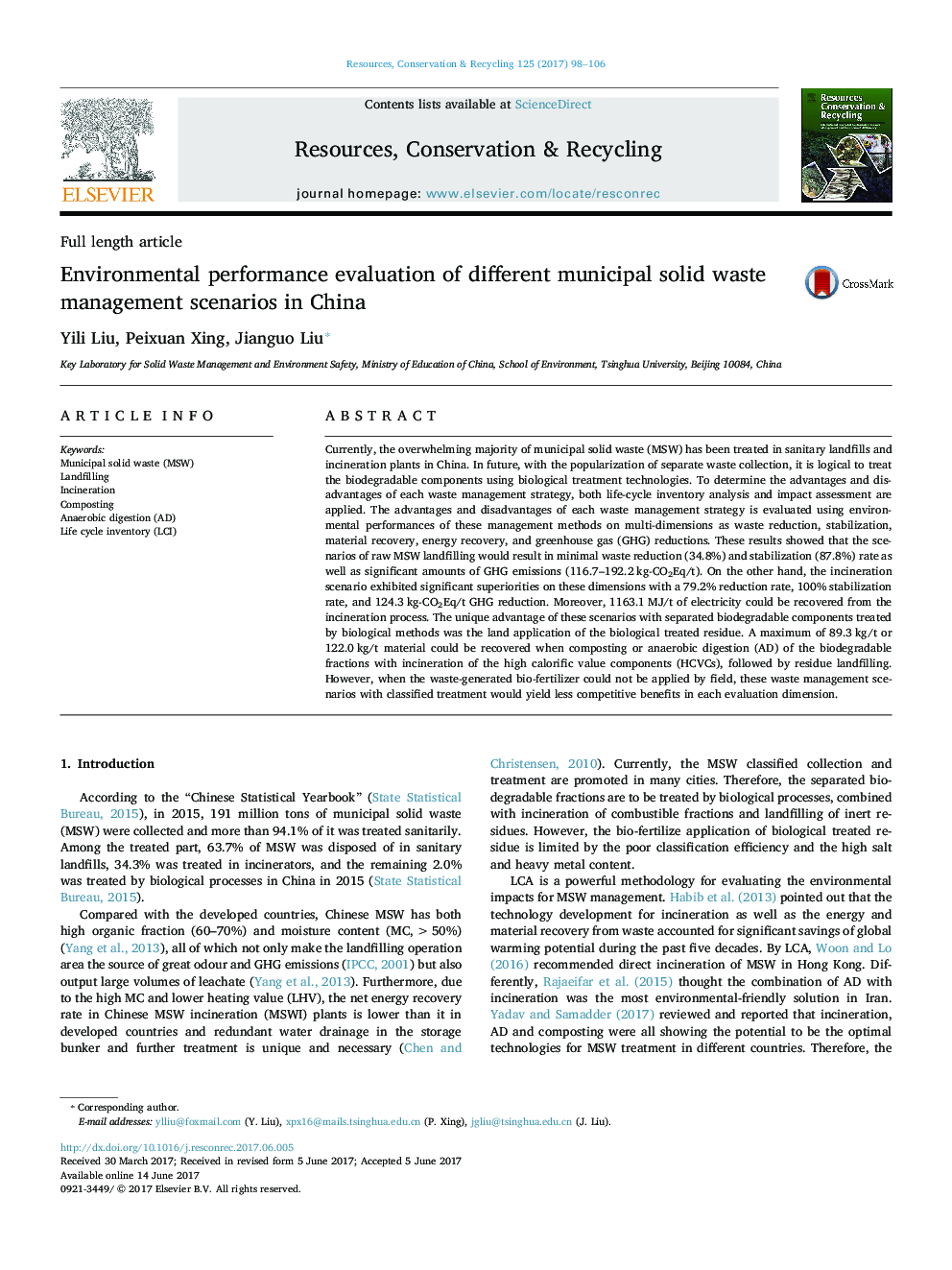| کد مقاله | کد نشریه | سال انتشار | مقاله انگلیسی | نسخه تمام متن |
|---|---|---|---|---|
| 5118651 | 1485667 | 2017 | 9 صفحه PDF | دانلود رایگان |
- Seven waste management scenarios were compared in five evaluation dimensions using LCI and LCA.
- The raw MSW landfilling was without any advantage in each evaluation dimension.
- Direct incineration presented as the optimum treatment process in the current scenario.
- Biodegradable parts with AD would be beneficial when the residue could be applied on land.
Currently, the overwhelming majority of municipal solid waste (MSW) has been treated in sanitary landfills and incineration plants in China. In future, with the popularization of separate waste collection, it is logical to treat the biodegradable components using biological treatment technologies. To determine the advantages and disadvantages of each waste management strategy, both life-cycle inventory analysis and impact assessment are applied. The advantages and disadvantages of each waste management strategy is evaluated using environmental performances of these management methods on multi-dimensions as waste reduction, stabilization, material recovery, energy recovery, and greenhouse gas (GHG) reductions. These results showed that the scenarios of raw MSW landfilling would result in minimal waste reduction (34.8%) and stabilization (87.8%) rate as well as significant amounts of GHG emissions (116.7-192.2Â kg-CO2Eq/t). On the other hand, the incineration scenario exhibited significant superiorities on these dimensions with a 79.2% reduction rate, 100% stabilization rate, and 124.3Â kg-CO2Eq/t GHG reduction. Moreover, 1163.1Â MJ/t of electricity could be recovered from the incineration process. The unique advantage of these scenarios with separated biodegradable components treated by biological methods was the land application of the biological treated residue. A maximum of 89.3Â kg/t or 122.0Â kg/t material could be recovered when composting or anaerobic digestion (AD) of the biodegradable fractions with incineration of the high calorific value components (HCVCs), followed by residue landfilling. However, when the waste-generated bio-fertilizer could not be applied by field, these waste management scenarios with classified treatment would yield less competitive benefits in each evaluation dimension.
Journal: Resources, Conservation and Recycling - Volume 125, October 2017, Pages 98-106
